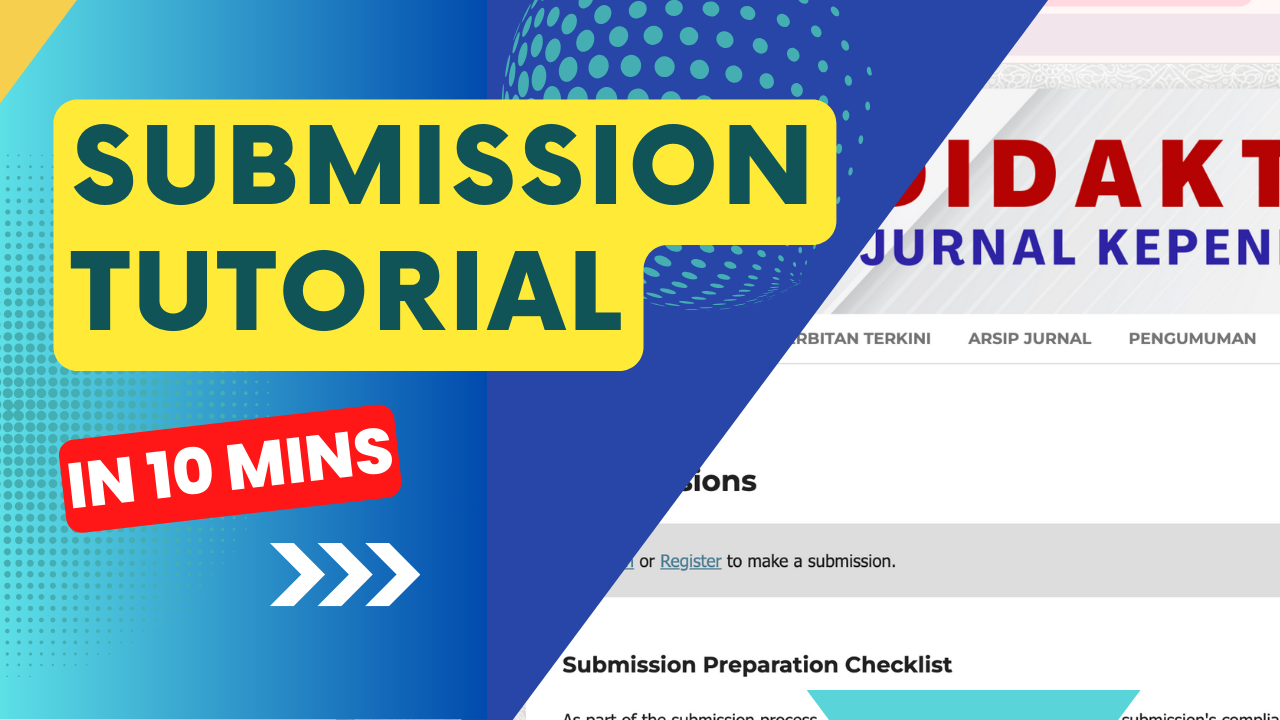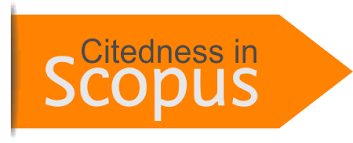Analysis of the Effect of Learning Interest, Learning Motivation and Self-Awareness on Arabic Learning at Madrasah Aliyah Bilingual Batu
Abstract
This study aims to test the independent variables consisting of learning interest, learning motivation, and self-awareness of the dependent variable, namely Arabic language learning. The research approach used is quantitative with the PLS 3 SEM method. The data collection method uses questionnaire distribution techniques and sample selection in this study uses a sample quota, namely the number of respondents taken has been determined by the sample size. In this study, the sample used as many as 85 respondents showed the results of: (H1) Accepted, that is, there is a significant influence of student interest in learning Arabic with path coeficient (0.962) and p-value (0.000 < 0.05). (H2) Rejected that is, there is no significant influence of student motivation on Arabic learning with path coeficient (0.011) and p-value (0.699 > 0.05). 3. (H3) Rejected i.e. there is no significant influence of students' self-awareness on Arabic language learning with path coeficient (0.020) and p-value (0.496 > 0.05). while the R-square value is the result of measuring Arabic learning variables (0.949). This value means that the Arabic learning variable is influenced by the independent variable by 94.9%, while the rest is influenced by other factors. While each of the rest is influenced by other factors outside the variables studied. researchers provide recommendations to teachers or schools to carry out special assistance, both subject teachers and counseling guidance in order to strengthen aspects of motivation and self-awareness.
Keywords: Learning Interest, Learning Motivation, Self Awareness, Arabic Learning
Metrics
References
Abdilah, A. J., & Al Farisi, M. Z. (2023). Systematic Literature Review: Problematika Pembelajaran Bahasa Arab di Sekolah. Ukazh: Journal of Arabic Studies, 4(1), 39–51.
Cangur, S., & Ercan, I. (2015). Comparison of model fit indices used in structural equation modeling under multivariate normality. Journal of Modern Applied Statistical Methods, 14(1), 14.
Ghozali, I. (2016). Aplikasi analisis multivariete dengan program IBM SPSS 23.
Hair, J. F., Risher, J. J., Sarstedt, M., & Ringle, C. M. (2019). When to use and how to report the results of PLS-SEM. European Business Review, 31(1), 2–24.
Haq, S. (2023). Pembelajaran Bahasa Arab di Era Digital: Problematika dan Solusi dalam Pengembangan Media. MUKADIMAH: Jurnal Pendidikan, Sejarah, Dan Ilmu-Ilmu Sosial, 7(1), 211–222.
Henseler, J., Ringle, C. M., & Sarstedt, M. (2015). A new criterion for assessing discriminant validity in variance-based structural equation modeling. Journal of the Academy of Marketing Science, 43, 115–135.
Kuntoro, A. Y., Hasan, M. A., Saputra, D. D., & Riana, D. (2019). Analisis Faktor-Faktor Yang Mempengaruhi Kepuasan Pelanggan Fixpay Menggunakan SEM Dengan PLS. Jurnal Informatika, 6(1), 122–133.
Latan, H., & Ramli, N. A. (2013). The results of partial least squares-structural equation modelling analyses (PLS-SEM). Available at SSRN 2364191.
Nurdiana, R., Abidin, M., & Fauzi, A. (2023). Pengaruh Self Awareness Terhadap Prestasi Belajar Bahasa Arab Santri Pondok Pesantren Modern Muhammadiyah Boarding School Purwokerto Tahun Ajaran 2022/2023. TarbiyahMU, 3(1), 1–7.
Panglipur, I. R., & Marsidi, M. (2021). Pengaruh penerapan kurikulum terhadap motivasi dan minat belajar siswa dengan angket skala Likert pada matematika. Prismatika: Jurnal Pendidikan Dan Riset Matematika, 3(2), 153–161.
Purwono, F. H., Ulya, A. U., Purnasari, N., & Juniatmoko, R. (2019). Metodologi Penelitian (Kuantitatif, Kualitatif dan Mix Method). GUEPEDIA.
Sakdiah, N., & Sihombing, F. (2023). Problematika Pembelajaran Bahasa Arab. Jurnal Sathar, 1(1), 34–41.
Sardana, N., Shekoohi, S., Cornett, E. M., & Kaye, A. D. (2023). Qualitative and quantitative research methods. In Substance Use and Addiction Research (pp. 65–69). Elsevier.
Sarstedt, M., Ringle, C. M., & Hair, J. F. (2021). Partial least squares structural equation modeling. In Handbook of market research (pp. 587–632). Springer.
Sekaran, U., & Bougie, R. (2016). Research methods for business: A skill building approach. john wiley & sons.
Sholihah, L. L., & Hidayati, S. N. (2023). Penerapan Media Smart Apps Creator Dalam Pembelajaran Berbasis Inkuiri Untuk Meningkatkan Hasil Belajar Siswa. EDUPROXIMA (Jurnal Ilmiah Pendidikan IPA), 5(2), 116–122.
Sihotang, H. (2023). Metode penelitian kuantitatif.
Sukesti, F., Ghozali, I., Fuad, F., KHARIS ALMASYHARI, A., & Nurcahyono, N. (2021). Factors affecting the stock price: The role of firm performance. The Journal of Asian Finance, Economics and Business, 8(2), 165–173.
Copyright (c) 2024 Ryan Nurdiana, Desy Kumalasari, Sri Hardianti Rukmana, Abdullah Majid

This work is licensed under a Creative Commons Attribution 4.0 International License.
Dengan mengirimkan naskah artikel, berarti penulis setuju dengan segala kebijakan yang ditetapkan oleh jurnal dan penerbit.
Penulis menyatakan bahwa:
- kebijakan ini telah diketahui dan disetujui bersama oleh semua penulis;
- naskah artikel belum dipublikasikan secara resmi sebelumnya di media ber-ISSN atau ber-ISBN yang terdaftar, kecuali dalam bentuk abstrak atau sebagai bagian dari materi kuliah, atau skripsi/tesis/disertasi yang tidak diterbitkan;
- naskah tidak sedang dalam proses editorial dan dipertimbangkan untuk publikasi di tempat lain;
- publikasi naskah ini telah disetujui oleh semua penulis, institusi afiliasi penulis, otoritas yang bertanggung jawab, dan lembaga di mana kegiatan telah dilakukan;
- naskah berisi materi yang aman dari pelanggaran hak cipta;
Perjanjian Hak Cipta dan Lisensi
- Penulis memiliki hak cipta dan hak kepemilikan lainnya yang terkait dengan artikel.
- Penulis memiliki hak dan diizinkan untuk menggunakan substansi artikel untuk karya-karya penulis berikutnya, termasuk untuk keperluan bahan/materi kuliah dan buku.
- Penulis menyerahkan hak publikasi pertama kepada jurnal dengan di bawah Lisensi Creative Commons (CC BY 4.0).
Pernyataan Lisensi CC BY 4.0
Anda diperbolehkan:
- Berbagi — menyalin dan menyebarluaskan kembali materi ini dalam bentuk atau format apapun;
- Adaptasi — menggubah, mengubah, dan membuat turunan dari materi ini untuk kepentingan apapun, termasuk kepentingan komersial.
Pemberi lisensi tidak dapat mencabut ketentuan di atas sepanjang Anda mematuhi ketentuan lisensi berikut ini.
- Atribusi — Anda harus mencantumkan nama yang sesuai, mencantumkan tautan terhadap lisensi, dan menyatakan bahwa telah ada perubahan yang dilakukan. Anda dapat melakukan hal ini dengan cara yang sesuai, namun tidak mengisyaratkan bahwa pemberi lisensi mendukung Anda atau penggunaan Anda.
- Tidak ada pembatasan tambahan — Anda tidak dapat menggunakan ketentuan hukum atau sarana kontrol teknologi yang secara hukum membatasi orang lain untuk melakukan hal-hal yang diizinkan lisensi ini.





.png)








